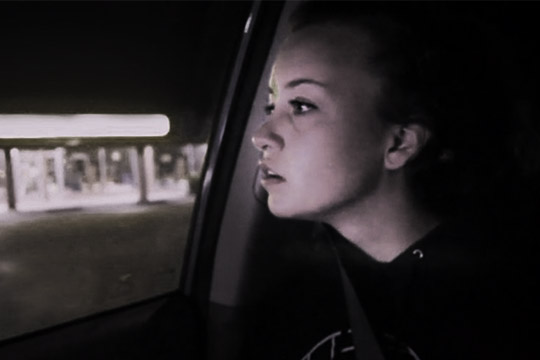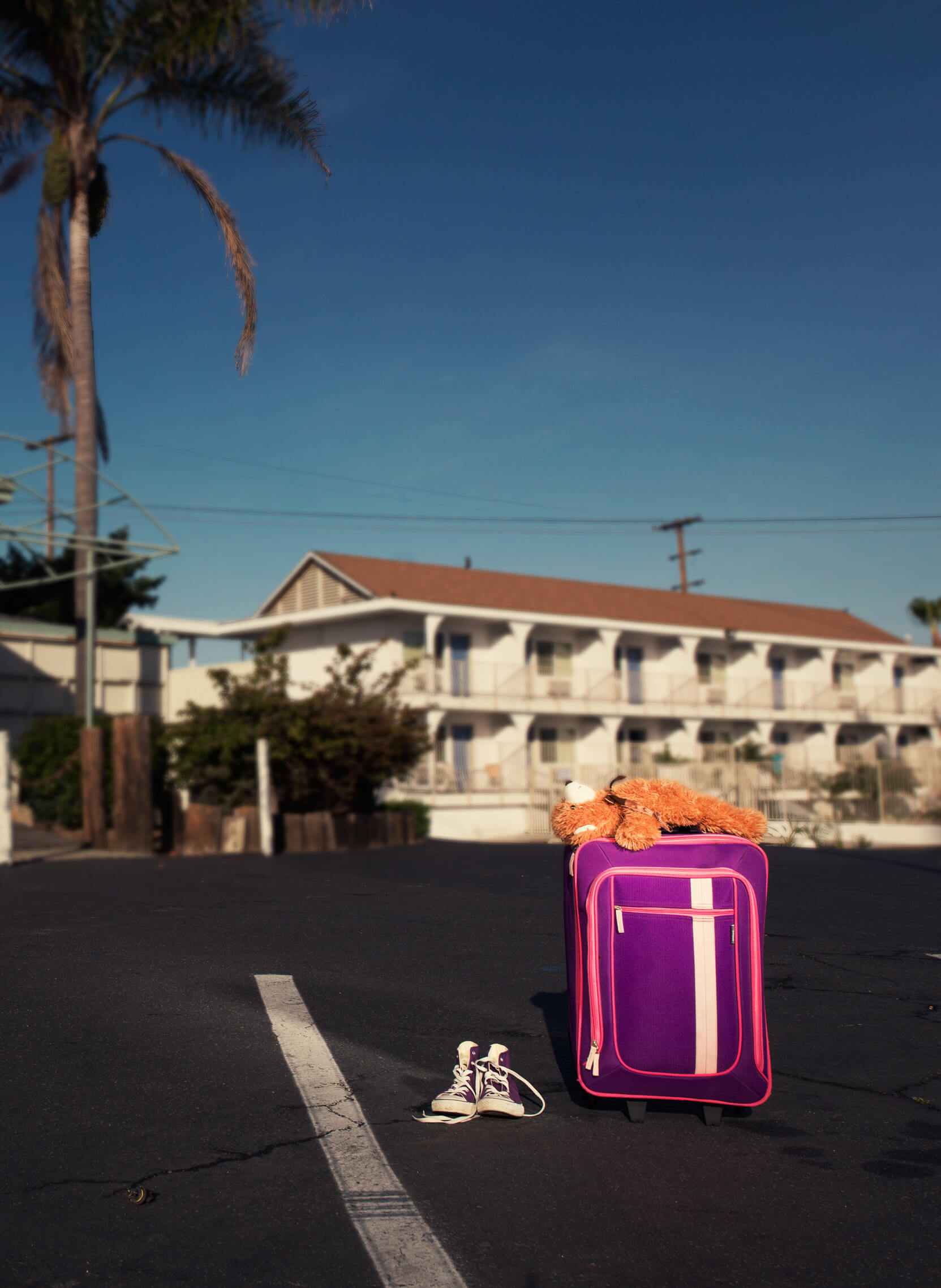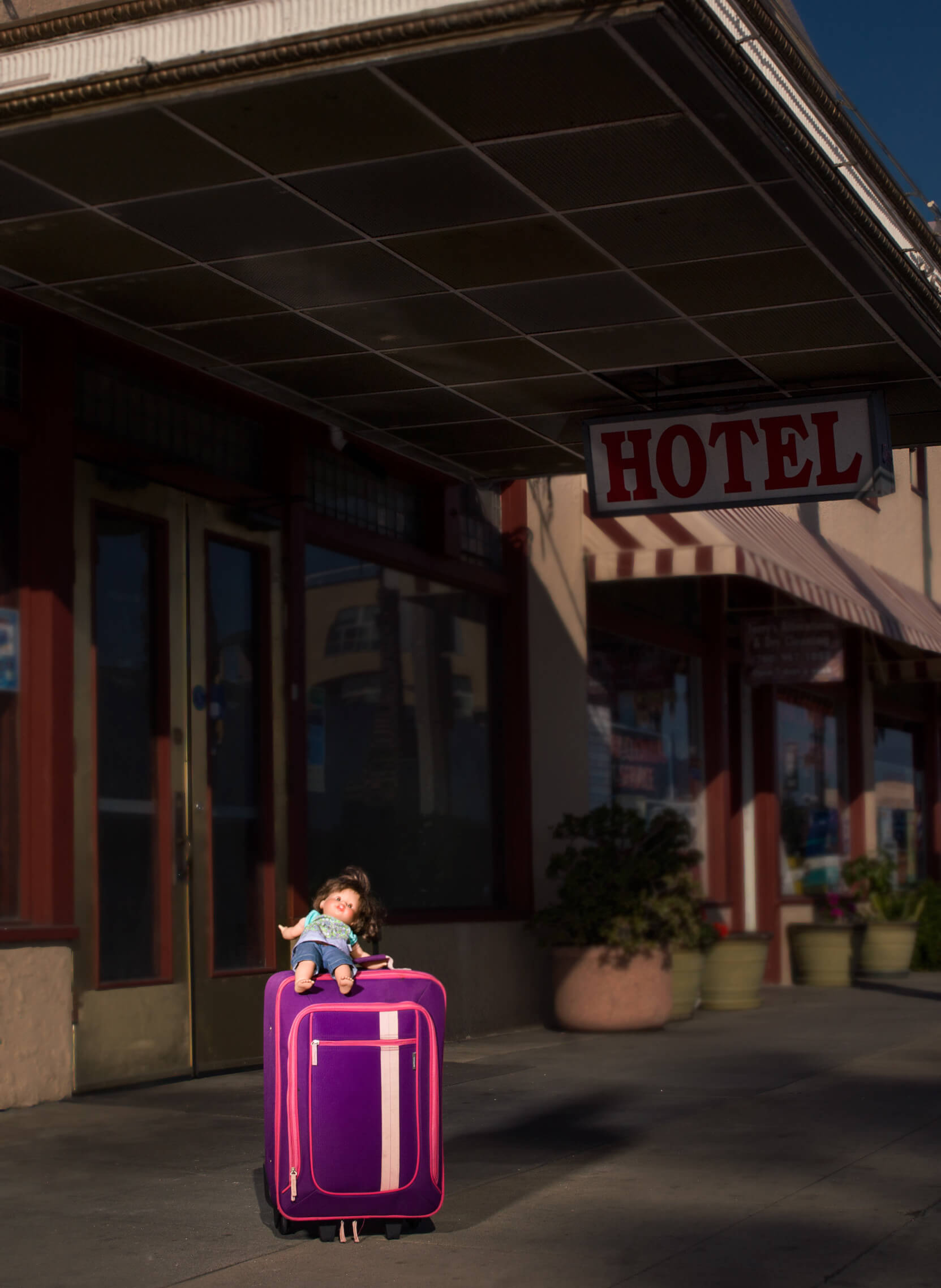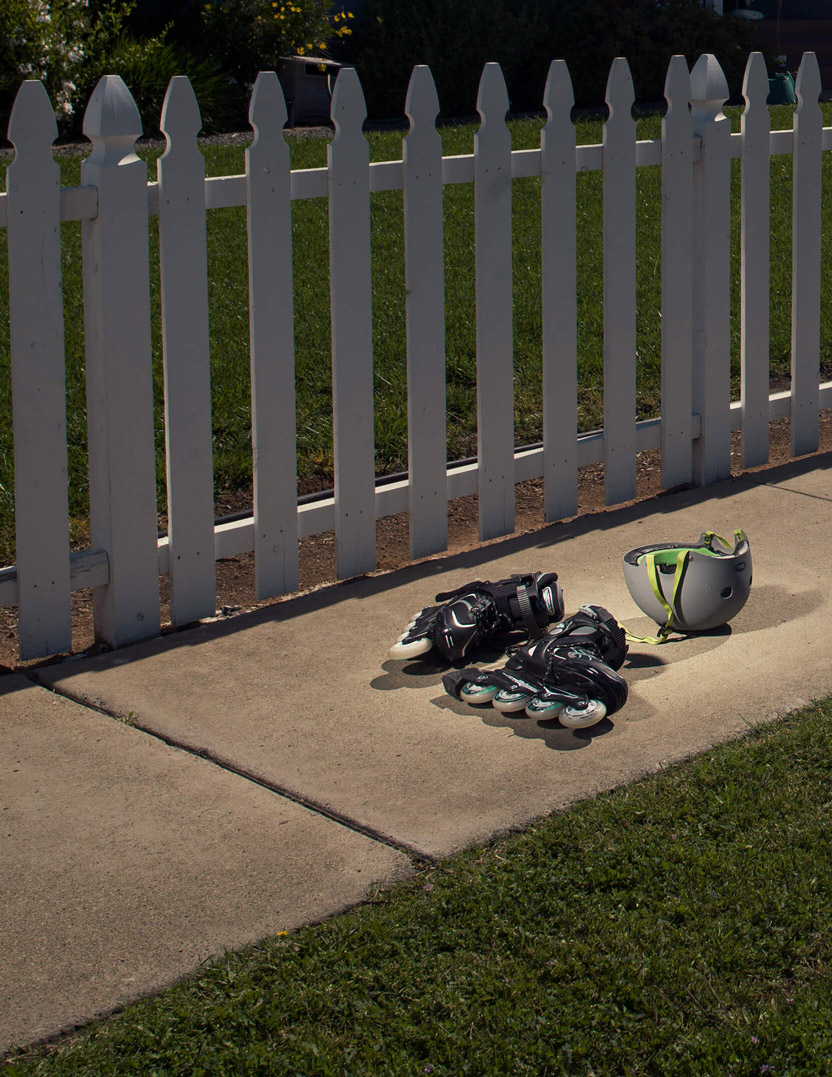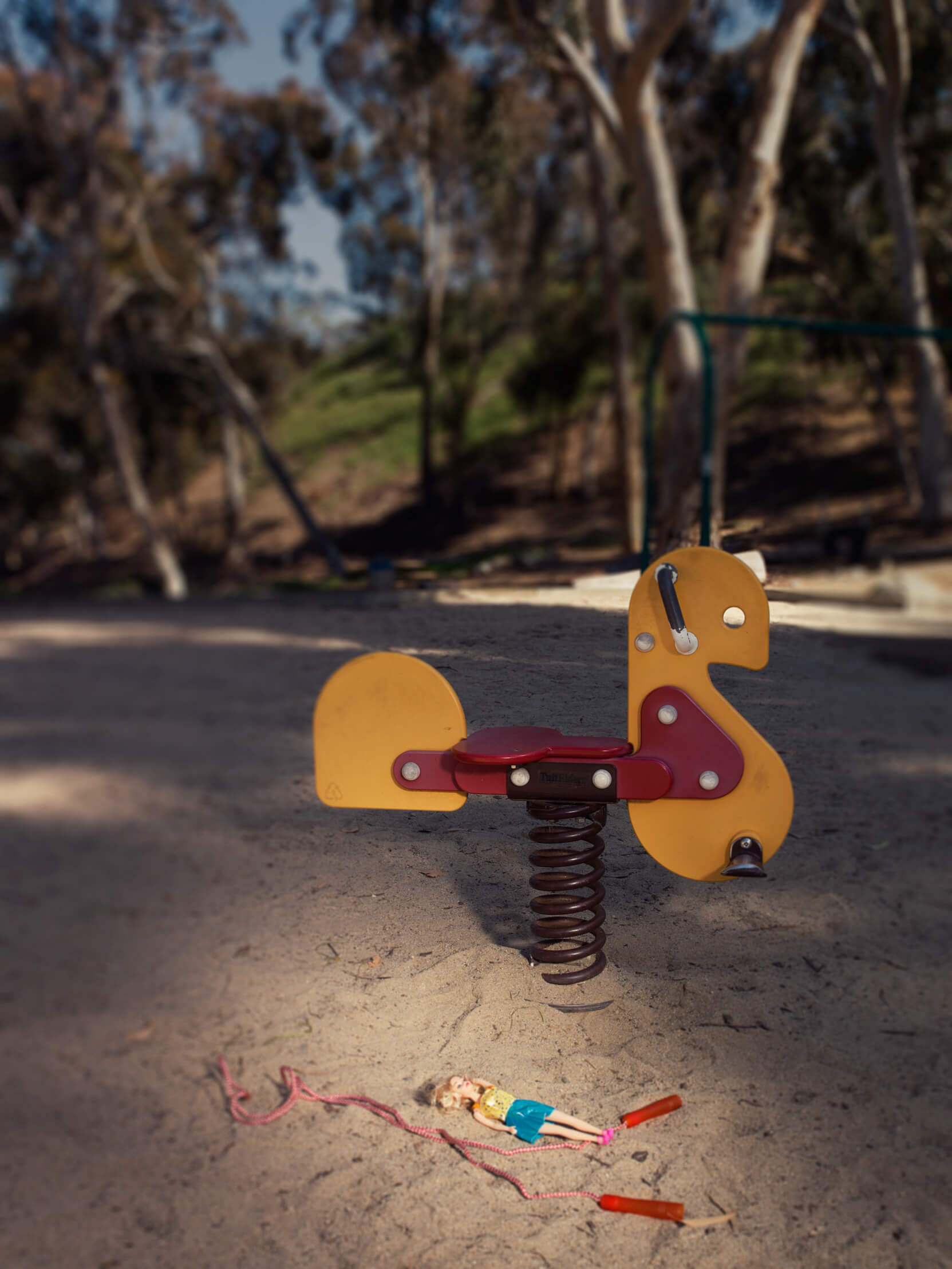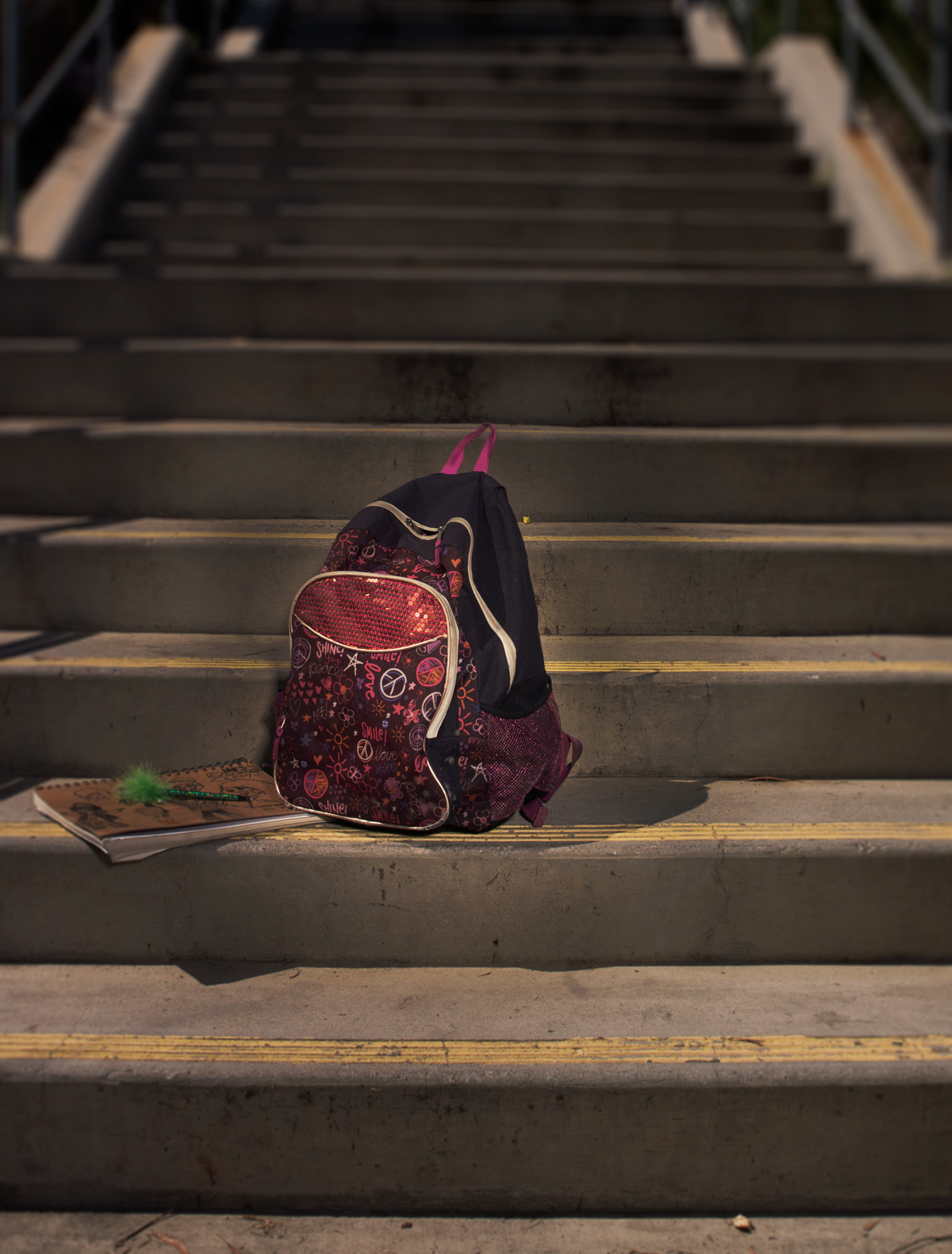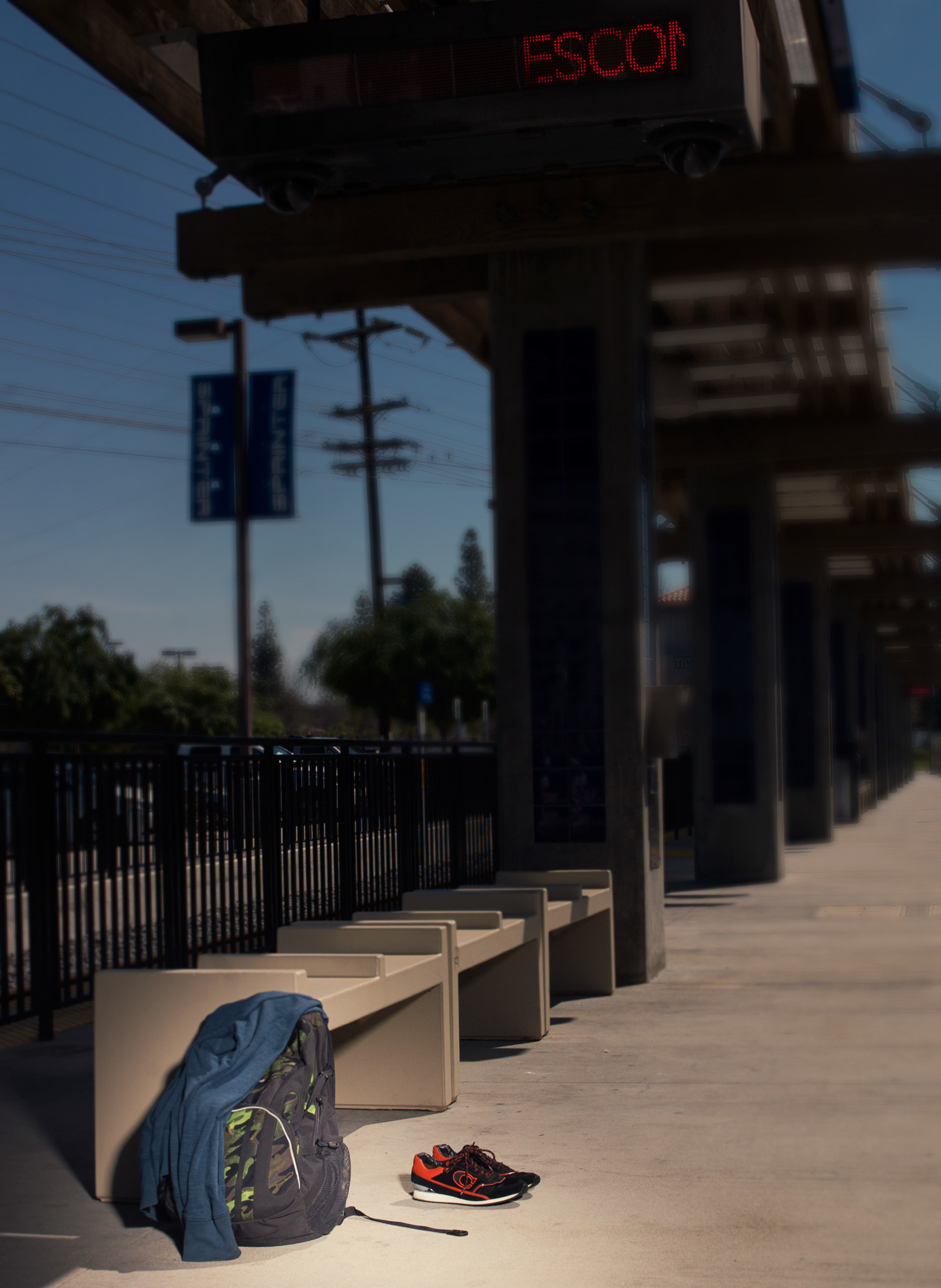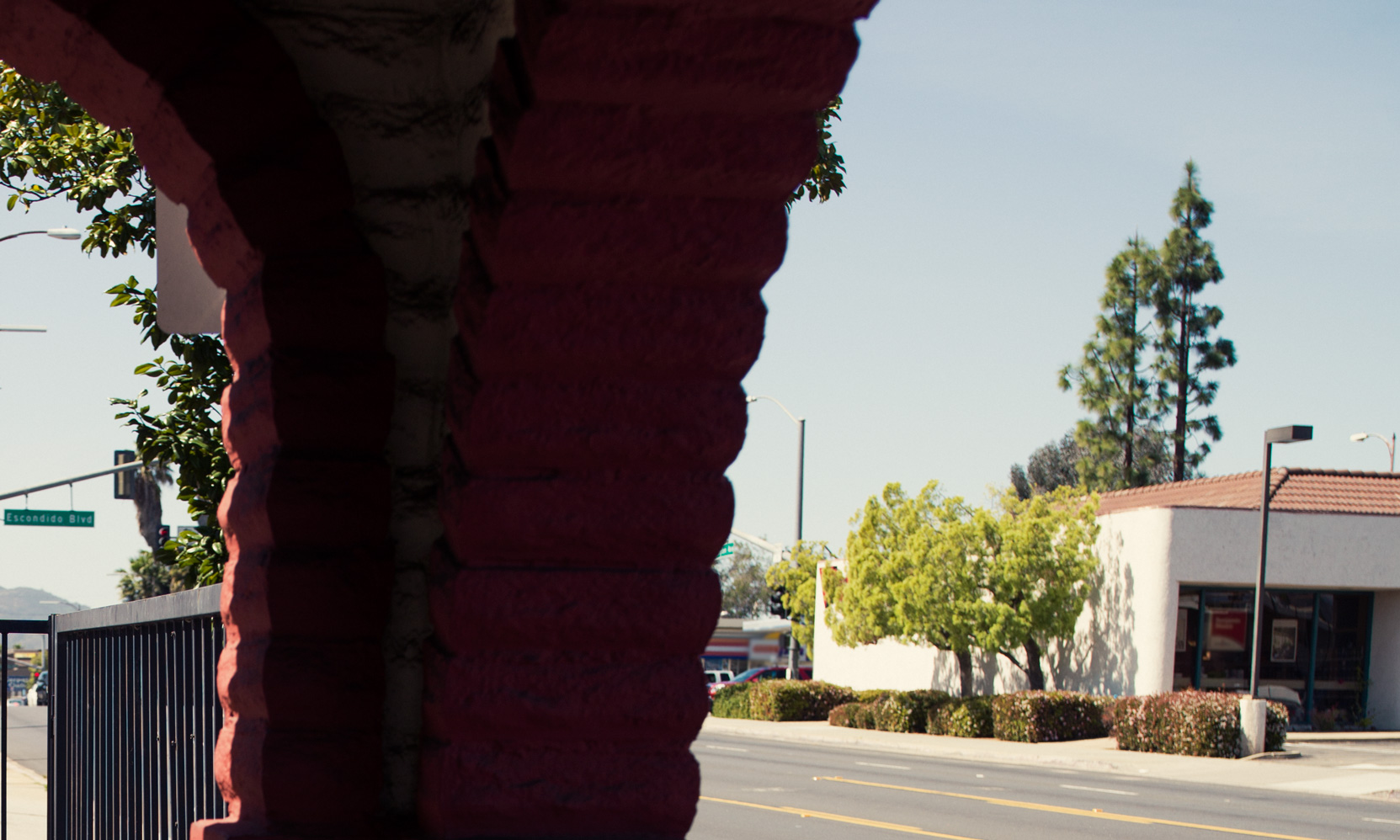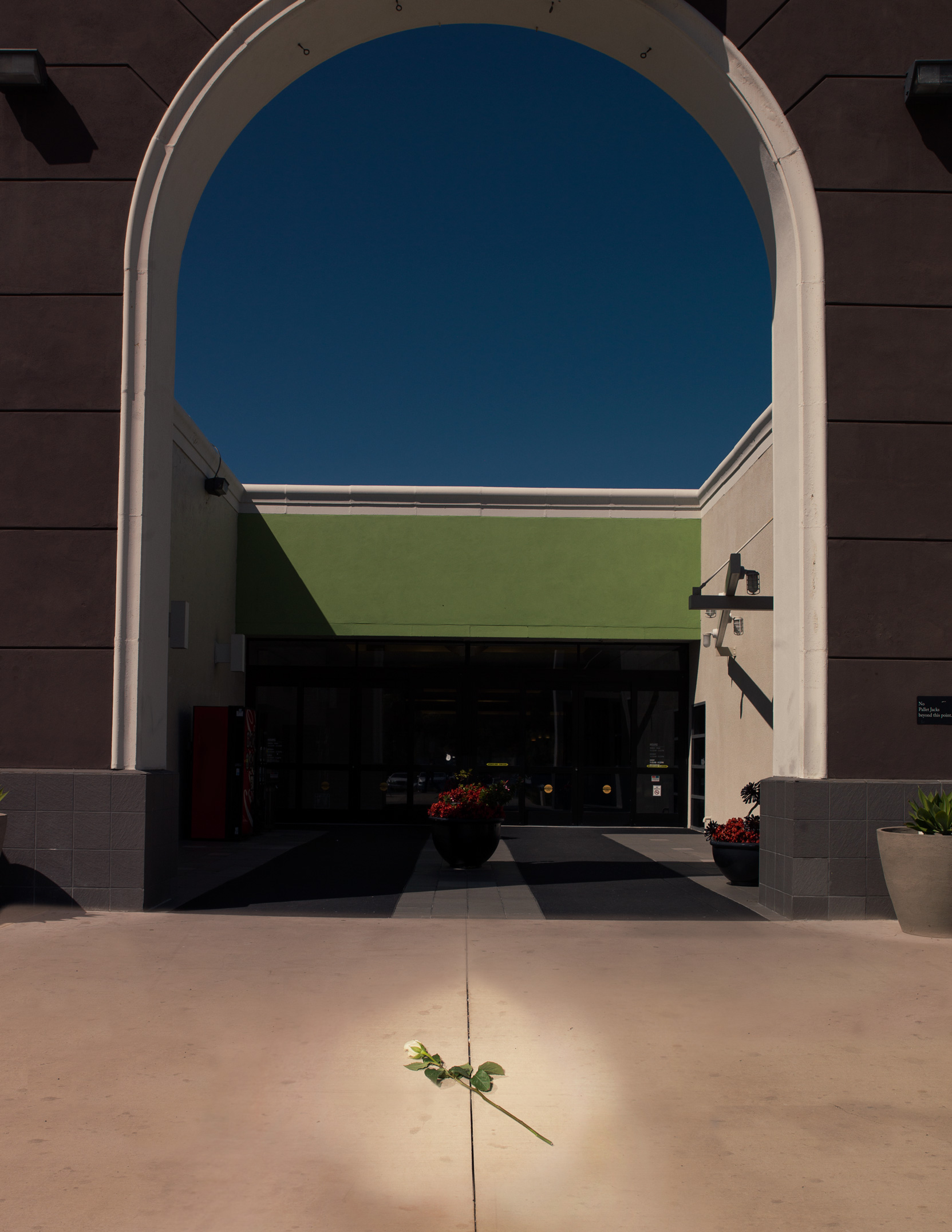Sex Trafficking
Human trafficking is a form of modern day slavery that is happening in communities across the U.S including rural areas, suburban towns and big cities. Trafficked persons represent various socio-economic, ethnic, racial and religious backgrounds. Trafficked students may continue to attend school, or at least sporadically, while involved in labor or sexual slavery. Victims endure physical, psychological and emotional trama which manifests as behavioral issues such as aggression and truancy. Behaviorial issues, in turn, negatively impact the learning environment.
12 is the average age of young girls and boys entering into sex slavery in the U.S. today.
Traffickers build trust, with targeted youths, over an extended period of time in order to draw them into modern slavery. Confirmed cases reveal that trafficking activities occur on campus, during school-sponsored events and among peers. Traffickers often use students as recruiters. Effective prevention and detection efforts include collaboration with many key stakeholders. For model policies and protocol refer to the guide published by the U.S. Department of Education, Office of Safe and Healthy Students, Human Trafficking in America's Schools.
12: A National Campaign To Fight Child Trafficking
ISAFE has produced a documentary entitled "12". This documentary is about a student, at the age of 12, that was lurred into sex trafficking walking home from school. Partnerships are essential. ISAFE is seeking partnerships with businesses, NGO's, faith-based organizations, law enforcement, governmental agencies and other institutions who share a common goal in the protection of our nation's youth. A picture tells a thousand words. ISAFE would like your support in fighting this endeavor on behalf of our nations most precious commodity - kids!.
Learn More#WALKWITH12 - Portraits of Innocence
Our project #WALKWITH12 strives to drive public awareness and inspire a nationwide effort to prevent, identify and eradicate this horrid crime against minors.
Click on the tabs below to #WALKWITH12 and learn about common areas where trafficking occurs.
About #WALKWITH12 – Portraits of Innocence
Photographer Tim Hans traversed North County San Diego with the ISAFE Team to shed light on the grim subject of domestic minor sex trafficking. Through the power of photography, Hans captures the stark contrast between undefiled youth and the dark shadows of child exploitation. Hans’ use of light exposes an issue often misunderstood as a problem that only occurs in foreign countries. The truth is that children and teens from all walks of life and from every corner of the U.S. are abducted, enticed, coerced and sold as slaves. Sex trafficking is happening right here in America.
Photos in this series feature familiar objects from childhood and adolescence, placed against mindfully selected backdrops, to express the stories of underage victims and survivors of sex trafficking.
Our sources in Homeland Security and law enforcement have provided specific sites where minors have been solicited, exploited and rescued as well as general locations where youth are recruited and marketed in the sex trade. Traffickers target teens at bus stops, transit stations, shopping malls, and even middle schools and high schools. Photos captured in general locations represent the communities in all parts of the country. Photos depicting the actual places where sex trafficking has occurred in the North County region of San Diego are specified in the photo caption.
The visual elements, carefully chosen locations and angles of light compose a faceless story that beckons to be told. Photos are devoid of human faces to illustrate the absence of a young life, yet hope remains: the hope of survival, the hope of rescue, the hope of restoration, and the ultimate hope that child sex trafficking will, one day, be eliminated. The goal of this project is to drive public awareness and inspire a nationwide effort to prevent, identify and eradicate this horrid crime against minors.
#walkwith12
Motels Near Highways
According to sources in Homeland Security, hotels and motels close to freeways are common venues for sex trafficking due to easy access and the ability to maintain secrecy. Pimps and johns pay cash for rooms to conceal their identity. Traffickers incarcerate minors in rented rooms for in-calls, that is, a child prostitutes provides sexual services to multiple buyers from a single room. Physical beatings and psychological abuse condition trafficked youth to remain in their quarters. Shackled by fear, and intoxicated with drugs and alcohol, sex slaves dare not attempt to escape. Adult buyers also rent rooms for out-calls; they arrange to meet at the motel, pay for the room, and engage in sex acts with minors.
Managers and employees in the hotel and lodging industry are in an essential position to identify and report cases of child sex trafficking. Patrons can help, too, by learning how to recognize signs and reporting tips to the National Human Trafficking Resource Center at 1-888-373-7888. In case of and emergency situation, call 9-1-1.
A rolling suitcase, teddy bear and sneakers represent the innocence of a child. The two-story motel in the background, bright with sunlight, illuminates a dark act that takes place behind the curtains.
You can help us expose the dark reality of domestic minor sex trafficking. #walkwith12
The motel in this photo is not a reported site where child sex trafficking has occurred. The site was selected to represent hotels, motels, inns and lodges situated near major highways.
Related Articles:
FBI Stories. October 13, 2015. “Operation Cross Country: Recovering Victims of Child Sex Trafficking.” Federal Bureau of Investigation. Retrieved from: https://www.fbi.gov/news/stories/2015/october/operation-cross-country
Location: Oceanside, CA
Photographer: Tim Hans
Inns
According to the San Diego Sherriff’s Department, in December of 2015, officers rescued a 13-year-old Fresno girl from the Mt. Vernon Inn. The female victim had been advertised on social media as part of a Fresno-based operation. Suspects involved in the case forced the girl to prostitute in the Escondido area for several days. After receiving an alert from the Fresno Police Department regarding the online ad, the San Diego Human Trafficking Task Force and detectives from the Escondido Police Department located and rescued the teenager.
The bright colors in the suitcase, shoes and denim jacket convey a teenage youth. In the second photo, the doll not only represents the hopes and dreams of a little girl as she grows into a woman, it also symbolizes an object, a plaything. Youth trapped in sexual slavery are dehumanized and treated as commodities.
You can help. #walkwith12
The site was selected to represent a reported rescue of a minor victim of sex trafficking.
Related Articles:
Adams, A. and Fleming, O. December 4, 2015. “Officers Rescue 13-Year-Old Girl from Sex Trafficking Operation.” NBC San Diego. Retrieved from: http://www.nbcsandiego.com/news/local/Officers-Rescue-13-Year-Old-From-Sex-Trafficking-Operation-360652031.html
Valley Center Happenings. December 5, 2015. “13-Year-Old Human Trafficking Victim Rescued in Escondido” Retrieved from: http://valleycenterhappenings.com/17690/159636/a/13-year-old-human-trafficking-victim-rescued-in-escondido
Location: Escondido, CA
Photographer: Tim Hans
Hotels
A child’s suitcase and baby doll stands in front of the entrance of a historic hotel on Coast Highway in Oceanside. The gutted lobby of the closed facility represents the shut-down of crimes against children.
Domestic minor sex trafficking has exploded in the U.S. The National Report cites that an increase in child trafficking exceeding 800% over a two year period is largely due to the aid of technology (2009). Online classified websites provide traffickers with an effective platform to sell sex, and approximately 75% of underage victims say that they have been advertised or sold online (Bouche, 2015). Traffickers pay websites to post advertisements for underage prostitutes in the adult section of online classifieds. In exchange, the websites collect an enormous sum from these third party listings. In 2013, classified websites raked in over $45 million dollars in revenue. Backpage accounts for over 80% of these profits (2014).
Online access to underage sex workers provides a degree of anonymity with added convenience: mobile technology allows prospective buyers to engage in sex acts with minors on the fly. Buyers scroll through the adult section of online classified ads to find prostitutes that suit their preferences. Ads conceal the true age of trafficked minors, posed in provocative photos. Ads list the assorted sexual services that the young sex worker provides and the price per hour.
Online classified ad businesses can be critical allies in sex trafficking cases. Disabling the online marketplace for trafficked children will significantly disrupt the supply and demand for sex with minors. In 2010, Craigslist removed the adult section from the website, deleting an online venue that once facilitated the buying and selling of children. However, other sites like Backpage.com persist. Congress has filed a civil suit against Backpage for refusing to comply with an investigation of its business practices.
Join the effort to put an end to online trafficking of children. #walkwith12
Contact your State Representative here.
This photo is not an actual site of a sex trafficking case. The site was selected to depict the shut-down of sex trafficking.
Related Articles:
Associated Press. March 29, 2016. “Senate Files Civil Lawsuit Over Sex Ads.” New York Times. Retrieved from: http://www.nytimes.com/aponline/2016/03/29/us/politics/ap-us-congress-sex-trafficking.html?_r=0
CNN Wire Staff. August 26, 2010. “Attorneys General Call for Craigslist to Get Rid of Adult Service Ads.” CNN. Retrieved from: http://www.cnn.com/2010/CRIME/08/25/craigslist.adult.content/
Bouche, V. Ph.D. January, 2015. “Report on the Use of Technology to Recruit, Groom and Sell Domestic Minor Sex Trafficking Victims.” Thorn. Retrieved from: https://27l51l1qnwey246mkc1vzqg0-wpengine.netdna-ssl.com/wp-content/uploads/2015/02/Survivor_Survey_r5.pdf
Smith, L.A., Healy Vardaman, S. & Snow, M. A. 2009. “The National Report on Domestic Minor Sex Trafficking: America’s Prostituted Children.” Shared Hope International. Retreived from: http://sharedhope.org/wp-content/uploads/2012/09/SHI_National_Report_on_DMST_2009.pdf
Location: Oceanside, CA
Photographer: Tim Hans
Agricultural Areas
Men, women and children are bought and sold for labor on American soil. Debt bondage keeps human trafficking victims tethered to their masters. Many women and girls are sold for commercial sex in cities, suburbs and rural areas. These women and girls are promised a dream, but find themselves in a dehumanizing nightmare. They are told that they will find husbands. They expect to find jobs that will support their family members living across the border, yet their bodies are sold and re-sold on a daily basis. They work, but they do not get paid. They are herded like livestock and treated like animals.
A 2003 publication of “Reina’s Story,” written by journalist Thomas Larson, identifies three locations in North County San Diego where migrant women and girls were exploited as sex slaves: a ditch behind the strawberry fields of Carlsbad, “the Reeds” at Agua Hedonia, and “Las Antenas.” Reina recounts that she held on to the hope that one of the men, who paid $25 for 10 minutes with her, would come to her rescue (Larson, 2003).
A worn backpack, shoes, and a buttoned shirt stand against an idyllic background: blue skies, tilled earth and wild grasses play in the breeze. The image reveals the story of migrants who come to the U.S. in search of a better life but are sold into a life of slavery.
Speak up for modern slaves.
This photo does not depict an actual site of a sex trafficking case. The site was selected to depict rural areas where people are exploited as modern slaves.
Related Articles:
Larson, T. August 7, 2013. “Reina’s Story.” San Diego Reader. Retrieved from: http://www.sandiegoreader.com/news/2003/aug/07/reinas-story/?page=1
Location: San Pasqual Valley, CA
Photographer: Tim Hans
Suburbs
The iconic white picket fence represents the American Dream and the ideals of family, security, and safety, yet the empty rollerblades on a pristine sidewalk speaks of the absence of a carefree childhood.
Minor victims of sex trafficking are bought and sold in suburbs as well as big cities. Youth are recruited and exploited in places close to home. A teen might encounter a trafficker while walking home from school. A child victim may be exploited by his or her own family member in a house down the street. In this digital age, social media opens the door for traffickers to recruit victims from inside the privacy of their own homes. Popular social networks provide traffickers with a big pond to fish for young victims. They scour social media profiles and posts in search of vulnerabilities: teens that say that they hate school, are upset with their parents, or are desperate for attention. Recruiters prey on their targets’ naiveté by feigning friendship and romance. They patiently develop relationships with unsuspecting children and teens, and when the time is right, they arrange to meet.
Traffickers use a myriad of tactics to entice young people into “the life.” Flattery and promises of wealth lure youth away from home. Once teens are in the possession of pimps, they are broken down and turned out onto the streets to peddle their bodies for sex. While runaway and foster youth are at risk of being ensnared into a life of sexual slavery, teens that come from nurturing homes in pleasant neighborhoods are also targeted for recruitment.
Social media privacy and safety are critical issues in the 21st century. Children and teens need to understand the risks of participating in worldwide networks. They need to know how to protect themselves and empower their peers. Teens also need a strong support system of family members, educators, counselors and community workers.
i-SAFE is committed to providing training and empowerment materials for schools and communities.
Prevent youth from being lured away from their homes. #walkwith12
This is not a known site where child abduction or sex trafficking has occurred. The site was selected to represent suburban areas across the U.S.
|LS|Pictured Left|RS| A neighborhood between San Pasqual Valley and downtown Escondido is lined with picket fences; the essence of successful suburban life.
Related Articles:
NPR News. August 1, 2013. “Finding and Stopping Child Trafficking.” Retrieved from: http://www.npr.org/templates/story/story.php?storyId=207901614
Hicks, B. June 25, 2015. “Sex Traffickers Using Social Media to Recruit Victims.” WECT News Retrieved from: http://www.wect.com/story/29382593/sex-traffickers-using-social-media-to-recruit-victims
Maxwell, R. October 13, 2014. “Central Texas Teens Lured into Sex Slavery.” KXAN. Retrieved from: http://kxan.com/2014/10/30/central-texas-teens-lured-into-sex-slavery/
Location: Escondido, CA
Photographer: Tim Hans
Children's Parks
Hosp Park is a scenic hillside playground for tots encircled with lanky eucalyptus trees. Hiking trails wrap around the hill topped with houses. The seaside breeze and whistling reeds of the nearby lagoon almost conceal the bustling shopping mall and major freeway, the I-5, nearby.
Picture the scene: A freckle-faced young girl, approximately age four scurries up to an unknown grown-up standing near the swing set at the park. The girl exuberantly shares her name. She bounces up and down and begs for the stranger to push her on the swings. When asked of her parents’ whereabouts, she points up the hill and indicates that her dad is nearby, but he is not in plain sight.
If invited to take a walk down the pathway, would the small child unquestioningly comply? Would she accompany a stranger to his or her car?
In a split second, in a blink of an eye, a small child can disappear.
The prospect of child abduction is terrifying for parents. Abducted children are at risk for exploitation, and the trusting nature of youngsters makes them easy targets. A stranger may kidnap a young child for nefarious purposes, yet the majority of child abductions are not strangers but family members and acquaintances. Numerous survivors recount their stories of being sexually abused by a family friend, a step parent, a boyfriend. Survivors have even revealed that their parents have sold them for sex. They play at the park just like other children, yet they have an untold secret.
A springy rocking horse, jump rope, and doll lay in the sand. These items speak of the purity, playfulness and trusting nature of young children; undefiled youth.
Child pornography fuels the demand for minors in the sex trade. Young children are trained with videos and sold into sexual slavery for greater financial gain. The United States is the leading producer and consumer of child pornography in the world.
Guard the innocent. #walkwith12
The site does not indicate an actual case of child abduction or sex trafficking. This park was selected to represent children’s play areas, and the need for parents and caretakers to remain vigilant.
Related Articles:
Caffrey, J. March 2, 2016. “Special Report: Local sex trafficking survivor shares her story” KRISTV. Retrieved from: http://www.kristv.com/story/31363270/special-report-sex-trafficking-in-corpus-christi
Location: Carlsbad, CA
Photographer: Tim Hans
Middle Schools and High Schools
An abandoned backpack and notebook sits on the steps of a local high school. A few small steps are all it takes to become a victim of sex trafficking: an invitation to a house party; an introduction to an older “friend;” a romantic relationship with someone who is charming, cunning and connected to the trade.
Young victims come from a variety of backgrounds. Among the most vulnerable include homeless youth, teens with ties to gang members, and students that come from abusive or neglectful families. However, at-risk youth are not the only targets. Victims may also be honor roll students, youth who serve in the community, or teens that participate in school functions.
Middle school and high school students across America that are lured into the commercial sex trade right outside of campus gates, yet teens are also approached by underage “pimps in training” and teenage prostitutes attending school. According to U.S. Attorney Laura Duffy, one criminal operation enrolled senior prostitutes into San Diego schools in order to recruit more girls (2014). Trafficked students attended class by day and worked as prostitutes at night. Law enforcement initiated an investigation after school personnel reported signs of exploitation: certain female students were showing pattern of absences on Mondays and Fridays. They came to school with expensive items, carrying multiple mobile phones, wearing provocative attire, and showing signs of physical abuse. Parents also notified law enforcement after seeing their daughters advertised online for commercial sex. As many as 100 young women and girls were rescued from the criminal operation: most of the survivors were recruited from San Diego County schools.
Education is the key to preventing more teens from falling into sexual slavery. Glorified lives of pimps and prostitutes in pop culture deceive youth into believing that “the life” is glamorous and leads to riches. The reality is that minor prostitutes are slaves to underground criminal networks. They endure beatings, contract STDs, and suffer deep psychological scars. School personnel closely interact with students and need to become aware of the signs of recruitment and exploitation—which is why we have launched this campaign to #walkwith12.
You can play a significant role in the production of a valuable resource that will aid in training school personnel and empowering students nationwide.
The site was chosen to represent schools across the U.S. and is not a reported location where teens were recruited or sold into prostitution.
|LS|Pictured Left|RS| An abandoned backpack and notebook sits on the steps of a local high school.
Related Articles:
Adams, A. & Nguyen, C. December 12, 2014. “Cross-Country Prostitution Ring Recruited Girls from East County Schools: U.S. Attorney.” NBC San Diego. Retrieved From: http://www.nbcsandiego.com/news/local/Cross-Country-Prostution-Ring-Recruited-Girls-from-East-Couny-Schools-285555621.html
Leshan, B. February 26, 2014. “Rep. Wolf Pushes Crackdown on Child Sex Traffickers.” WUSA9. Retrieved from: http://legacy.wusa9.com/story/news/local/2014/02/26/crackdown-on-sex-traffickers/5847159/
Location: Escondido, CA
Photographer: Tim Hans
Bus Stops, Train Stations and Transit Centers
According to sources, teens are frequently solicited at bus stops, trolley stations, and train stations.
An archway displaying a sign for tickets signifies a place of transit. A worn out pink and black backpack, sneakers and denim jacket represents a runaway teen who is picked up off of the street and ensnared in a life of prostitution. |LS|photo 1|RS|
Many runaway youth are in the foster care system. Teens in foster care are particularly susceptible to becoming victims of sexual slavery. While foster children may be placed in nurturing environments, the experiences of some foster care youth lead them to believe that they are tied to a paycheck. Their desire for attention and stability, coupled with their identity as a source of income for someone else, increases the risk of falling prey to the grooming tactics of traffickers. Runaway youth that seek escape from an abusive home life are often lured into sexual slavery. Pimps feign love and affection coupled with physical and psychological abuse; a twisted semblance of family ties. Underage sex workers refer to their pimps as “Daddy” and themselves as “Wifey.”
Transit centers are also places where young sex slaves solicit themselves. Ami Carpenter, assistant professor in the School of Peace Studies at the University of San Diego and co-author on the study of sex trafficking in San Diego notes that young girls sitting at bus stops that do not board the bus are soliciting themselves for sex (Burke et. al. 2015).
An unfilled pair of shoes, a backpack and jacket resembles a missing person that is waiting on the bench of a train stop. When will young victims of #sextrafficking receive their tickets to freedom?
You can help. #walkwith12
The Escondido Transit Center was selected to represent bus stops and train stations across the U.S. It does not identify a reported case of domestic minor sex trafficking.
Related Articles:
Burke, M., Cavanaugh, K. & Pico, P. October 28, 2015. “Study Shows Scope Of Sex Trafficking In San Diego County” KPBS News. Retrieved from: http://www.kpbs.org/news/2015/oct/28/sex-trafficking-san-diego-county/
Sharma, Amita. January 27, 2014. “Sex Trafficking Overtakes Drugs as San Diego County Gang’s Top Cash Source.” KPBS News. Retrieved from: http://www.kpbs.org/news/2014/jan/27/sex-trafficking-overtakes-drugs-san-diego-county-g/
Varandani, S. December 12, 2014. “San Diego Sex Trafficking: 22 Gang Members Indicted for Forcing Underage Girls into Prostitution.” International Business Times. Retrieved from: http://www.ibtimes.com/san-diego-sex-trafficking-22-gang-members-indicted-forcing-underage-girls-1751052
Location: Escondido, CA
Photographer: Tim Hans
Squares
According to sources, teens are frequently solicited at bus stops, trolley stations, and train stations.
An archway displaying a sign for tickets signifies a place of transit. A worn out pink and black backpack, sneakers and denim jacket represents a runaway teen who is picked up off of the street and ensnared in a life of prostitution. |LS|photo 1|RS|
Many runaway youth are in the foster care system. Teens in foster care are particularly susceptible to becoming victims of sexual slavery. While foster children may be placed in nurturing environments, the experiences of some foster care youth lead them to believe that they are tied to a paycheck. Their desire for attention and stability, coupled with their identity as a source of income for someone else, increases the risk of falling prey to the grooming tactics of traffickers. Runaway youth that seek escape from an abusive home life are often lured into sexual slavery. Pimps feign love and affection coupled with physical and psychological abuse; a twisted semblance of family ties. Underage sex workers refer to their pimps as “Daddy” and themselves as “Wifey.”
Transit centers are also places where young sex slaves solicit themselves. Ami Carpenter, assistant professor in the School of Peace Studies at the University of San Diego and co-author on the study of sex trafficking in San Diego notes that young girls sitting at bus stops that do not board the bus are soliciting themselves for sex (Burke et. al. 2015).
An unfilled pair of shoes, a backpack and jacket resembles a missing person that is waiting on the bench of a train stop. When will young victims of #sextrafficking receive their tickets to freedom?
You can help. #walkwith12
The Escondido Transit Center was selected to represent bus stops and train stations across the U.S. It does not identify a reported case of domestic minor sex trafficking.
Related Articles:
Burke, M., Cavanaugh, K. & Pico, P. October 28, 2015. “Study Shows Scope Of Sex Trafficking In San Diego County” KPBS News. Retrieved from: http://www.kpbs.org/news/2015/oct/28/sex-trafficking-san-diego-county/
Sharma, Amita. January 27, 2014. “Sex Trafficking Overtakes Drugs as San Diego County Gang’s Top Cash Source.” KPBS News. Retrieved from: http://www.kpbs.org/news/2014/jan/27/sex-trafficking-overtakes-drugs-san-diego-county-g/
Varandani, S. December 12, 2014. “San Diego Sex Trafficking: 22 Gang Members Indicted for Forcing Underage Girls into Prostitution.” International Business Times. Retrieved from: http://www.ibtimes.com/san-diego-sex-trafficking-22-gang-members-indicted-forcing-underage-girls-1751052
Location: Escondido, CA
Photographer: Tim Hans
Malls and Shopping Centers
Malls are a hub of activity—especially on the weekends. Local residents and tourists shuffle in and out of the doorways to shopping center. Teens meet up with their friends and hang out in the food court. Shopping malls are common places where teens spend their free time, yet malls are also places where youth, particularly teen girls, are solicited and ensnared into a life of prostitution.
Recruiters look for vulnerable targets: a group of girls susceptible to flattery; a lone teen willing to engage in a conversation. Pimps may even pose as talent scouts, modeling agents, or invite underage girls to parties. Pimps in training are often closer in age to targets. They turn on the charm and exchange numbers with a naïve young girl. Traffickers also send their more experienced prostitutes in to malls to recruit new victims.
Once the teen falls prey, a breakdown of the soul ensues. The victim is dehumanized, abused, and led to believe that entering the trade is her choice.
A white rose placed beneath the large archway leading to the doors of the shopping center symbolizes a stolen youth.
Raise awareness among youth. #walkwith12
Reported cases have not been identified at the Shoppes at Carlsbad. The selected location represents malls and shopping centers in communities across the U.S.
Related Articles:
Brouwer, S. July 25, 2015. “Two Arrested in Sacramento County Pimping Case.” KCRA. Retrieved from: http://www.kcra.com/news/local-news/news-sacramento/2-arrested-in-sacramento-county-pimping-case/34345572
Davis, Kristina. Oct. 31, 2015. “How Girls are Lured into Prostitution.” San Diego Tribune. Retrieved from: http://www.sandiegouniontribune.com/news/2015/oct/31/sex-trafficking-usd-study-prosecutions/
Location: Carlsbad, CA
Photographer: Tim Hans


